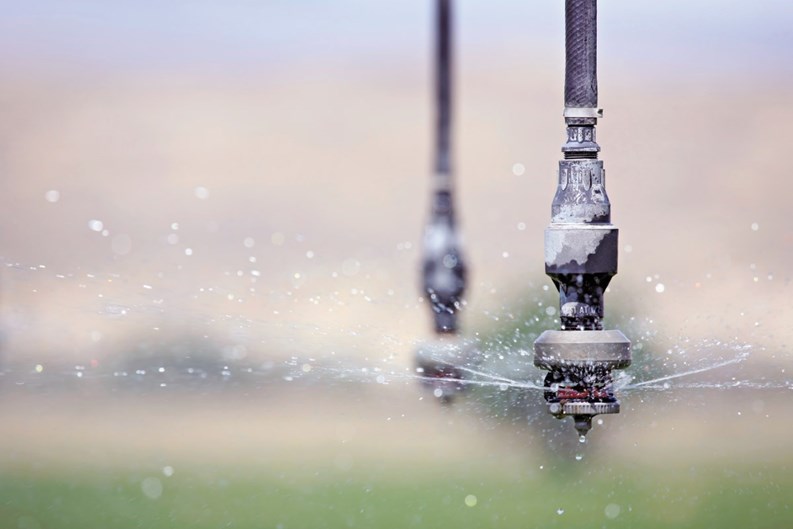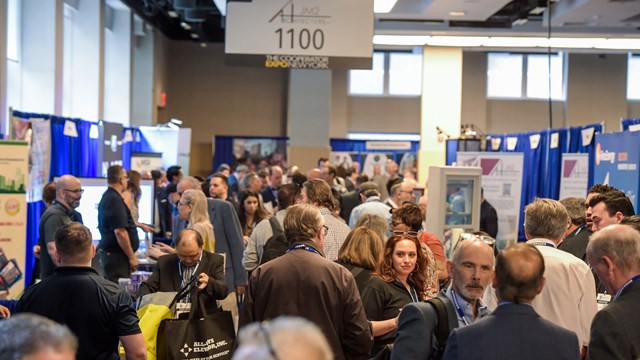A few generations ago, if you didn't have a well—and sometimes even if you did—your home had a rain barrel outside. It was a free, low-maintenance way to collect fresh water for cooking, cleaning, and other household needs.
Times have obviously changed a great deal, but cheap, clean water is always in demand, and with the move toward greener, more sustainable resources gaining momentum in nearly every corner of the culture, harvesting H2O is still a hot topic in both urban and suburban communities. While some single family homes still make use of the good old-fashioned rain barrel, HOAs and other buildings and developments are employing state-of-the-art technologies to accomplish the same task on a much larger scale—and some grassroots organizations and government agencies alike are pushing for water-saving measures to be written into law.
A Shift in Thinking
One noteworthy example of large-scale water harvesting is the luxury high-rise Visionaire condo in Manhattan. The 33-story building boasts a water-treatment system that can recycle up to 25,000 gallons of water per day for use in flushing toilets and in air-conditioning cooling units. A storm water collection system stores up to 12,000 gallons of rainwater, which is used to irrigate the building’s rooftop gardens.
Thanks to these installations, the 251-unit building uses 55 percent less potable water than a conventional residential building of the same size, and just won a project merit award from the Environmental Business Journal. “It is an honor. We’re thrilled that they chose to recognize us,” says Denise Venuti Free, manager of external relations for American Water, the firm that designed the building's water harvesting systems. The Visionaire, which was designed by architect Raphael Pelli, is the sixth such environmental project that American Water’s Applied Water Management Group has designed in Battery Park City, in Lower Manhattan. The first, the Solaire, received a Gold LEED (Leadership in Energy & Environmental Design) rating from the U.S. Green Building Council, and also features a reverse-osmosis system that irrigates nearby Teardrop Park.
The projects stand as high-tech examples of a shift in thinking about water use taking place not just in the tristate area, but around the country. Reasons for this shift range from rising "green" consciousness to local water shortages to new regulations aimed at preventing runoff from going straight into storm water drains or water tables. And while the country’s economic woes have slowed the pace of green building right along with other types of development, proponents say that a looming international water crisis, as well as the mainstreaming of an environmental ethos, means that rainwater harvesting will continue to attract interest. The question is whether it will eventually become as common here in the United States as it already is overseas.
“It all drives down to economics," says Donald Shields, vice president and director of construction for American Water’s Applied Water Management Group. "If the real cost of water were charged, I could see many of these projects going forward."
Technology costs are falling, but water is still heavily subsidized, although individual states do provide incentives for recycling. For a project such as Solaire, for example, the New York State Department of Environmental Conservation provides a 25 percent reduction in water rates. “That helps drive the economics of the project. It gets it close, but there still needs to be some work done,” says Shields.But economics aside, “For folks who want to do green building, [the Solaire] is an absolute showcase."
U.S. Playing Catch-Up
While cities such as Los Angeles, Tucson, Atlanta, and Santa Fe have developed rainwater harvesting strategies, the U.S. as a whole is playing catch-up to the rest of the world, said E.W. Bob Boulware, PE, president of the American Rainwater Catchment Association, who is writing a book on alternative water sources and helping draft national standards for this country. In places such as the Caribbean and Asia, for example, Boulware pointed out, rainwater harvesting is “no big deal—it’s just a way of life.” And while it is seen as cutting-edge technology in the U.S., the practice actually goes back millennia.
“Rainwater collection systems (e.g. cisterns, underground tanks, ponds) can significantly reduce or completely eliminate the amount of potable water used for irrigation,” says Ashley Katz, spokeswoman for the U.S. Green Building Council in Washington. “Rainwater can be collected from roofs, plazas, and paved areas and then filtered by a combination of graded screens and paper filters to prepare it for irrigation.”
Harvesting can also reduce the amount of pollutants going into the water supply. “Storm water runoff is a major problem from an environmental perspective, because the runoff gets into lakes and ponds and rivers,” carrying with it fertilizer, manure, debris, and oil from the streets, explained Kevin Cochran, director of business development for Free Rain, a British-based firm which designs harvesting systems for industrial, military, commercial, and residential developments.
Watering the Garden State
According to Joseph Mattle, supervising environmental engineer for the New Jersey Department of Environmental Protection (NJ DEP)'s Division of Water Supply, "New Jersey is currently in what we consider a normal drought period, though we're actually above average for precipitation and snowfall, so we're good right now. We don't have the same situation as other states like Florida, California, Arizona—we're fortunate enough to have on average 45 inches of rain here in New Jersey, so that does help us."
That being said, "There are beneficial reuse activities going on in the state," Mattle continues. "The majority of those are associated with business and industry right now. We do have a residential development that has beneficial reuse for outdoor watering. We also have a bunch of demonstration projects that the department is helping fund to bring about additional reuse projects here in New Jersey."
And, adds Scott Brubaker, NJ DEP's acting assistant commissioner for land use management, "It's certainly the public policy of New Jersey to support and encourage the beneficial reuse of water whenever possible."
Unlike drought-stricken states like Arizona and California, New Jersey doesn't have mandatory water-reclamation policies that would impact individual HOAs, says Mattle. He points out though, that "water conservation is going on in indoor fixtures, and everything that's required based on the plumbing code here in New Jersey. If you are looking at outdoor water use for common areas in multifamily homes or townhouse developments, their outdoor irrigation may require a water allocation permit if they're large enough."
According to Mattle and Brubaker, the NJ DEP has plenty of educational opportunities for HOAs wishing to learn more about saving water and improving their own water-use profile.
"We give presentations throughout the state on our water supply initiatives here," says Mattle, "including to folks associated with running office parks and homeowners associations. A lot of people do research either by phone call or by the Internet, and if we get requests for presentations or sit-down discussions, we're usually more than able to do so."
"Communities can work with a local environmental commission if necessary," Mattle continues. "The bottom line for environmental benefit is that there are economics associated with it as well."
Standout Examples
Water shortage may not be an emergency in New Jersey, but some HOAs here are still taking steps to conserve. According to Mattle, one of those is Homestead at Mansfield in Burlington County. "They actually have a beneficial reuse system for their outdoor watering," he says. "That was the first one in the state of New Jersey."
In other areas of the country, state laws have translated into substantial savings. Take The Landing at Southpoint Condominiums, a LEED silver-rated development in Durham, North Carolina, that received the green multi-family development of the year award from the Triangle Business Journal, thanks in part to its rainwater harvesting system. “All of the water that lands on the roof is routed through downspouts to a 22,000-gallon cistern under the parking lot,” along with all the condensate from the HVAC pipes, explained Reid Bryant, a development associate at Boylan Development Co. in Raleigh, North Carolina, which built The Landing.
The development, which currently has 54 units with another 103 planned, was able to save $200,000 by going with rainwater harvesting, said Cochran of Free Rain, which created The Landing’s system.
Because all the water from the roofs is collected in the cistern – and used within the state’s required five-day time period – the roofs no longer count toward the development’s impervious surfaces total. That allowed The
Landing to forego expensive underground sand filters and bio-retention ponds in favor of “a nice constructed wetland system,” which works in conjunction with the cistern to control stormwater runoff, said Bryant.
In addition to the immediate savings, there are some long-term perks, as well. “We don’t use any outside water for irrigation. It lowers the homeowner association’s bills and provides a steady supply of water,” said Bryant. In 2008, North Carolina suffered a months-long drought. All the cities in the area were on water restriction and all watering was banned. “Should that ever arise again, the community won’t suffer in terms of how its landscape looks,” said Bryant. “It cuts down on replacement costs for bushes and shrubs, and keeps everybody’s property values nice and high by keeping the exterior well-maintained.”
So while you don't have to go back to pioneer days to draw your daily water from a collection barrel, many rainwater harvesting strategies have been proven successful in not only helping save on energy costs but helping the overall environment as well.
Yvonne Zipp is a freelance writer and a frequent contributor to The New Jersey Cooperator. Additional research by David Chiu.






Leave a Comment